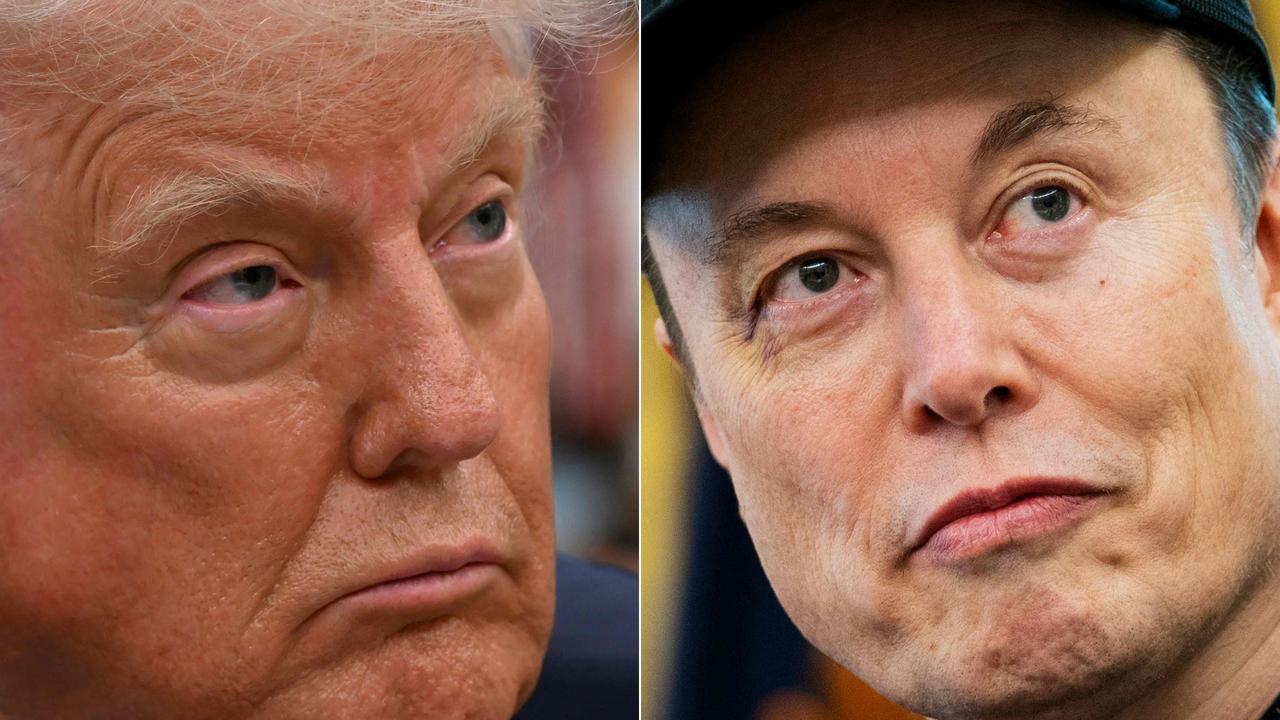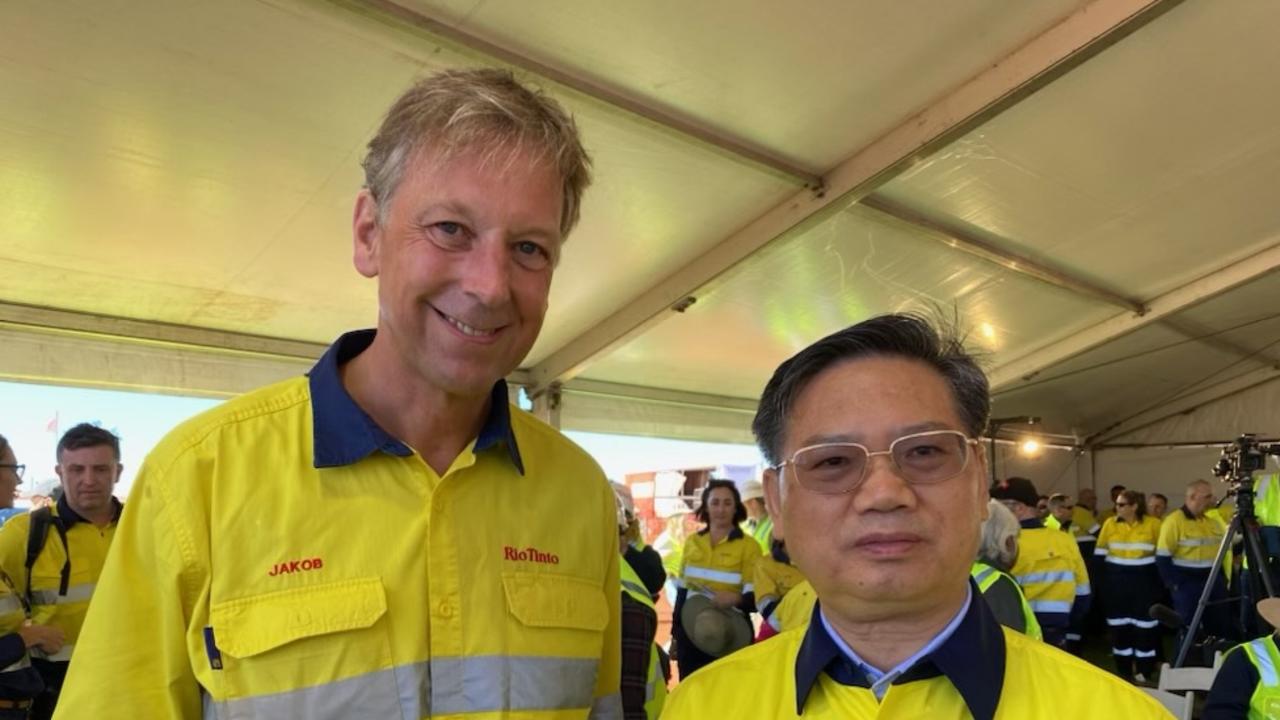Twiggy’s Power play a master stroke for mining company
Nev Power leaves Fortescue Mining today in a much stronger position than on his first day 6½ years ago.

You don’t amass a $5.4 billion fortune without making plenty of good decisions along the way, but there’s a case to be made that the best decision by billionaire Andrew Forrest was his appointment of Nev Power to replace him as Fortescue Metals Group CEO.
Today marks Power’s final day at the helm of Fortescue after an eventful 6½ years, with the iron ore miner a far stronger, leaner and more mature company than when he started.
Power was relaxed and reflective when he sat down with The Australian ahead of his final day at Fortescue, but admitted that saying his goodbyes had brought a tinge of sadness. “It has been emotional, it’s a bit tough to be leaving the family,” he said.
Somewhat surprisingly, given the near-universal acclaim for Power’s time at Fortescue, shares in the company are actually worth less today than when he started back in 2011.
That is primarily a function of the iron ore price, which was trading well in excess of $US100 a tonne during his early tenure, and doesn’t tell the true story of Power’s crucial role in Fortescue’s evolution.
While those lofty prices made iron ore an easy game for a while there, Power truly started to prove his worth when iron ore prices tanked in 2012.
It was then that Power and his CFO Stephen Pearce came into their own, taking the emergency measures to slow down the company’s spending and engineering the debt refinancing that gave the then debt-heavy and cashflow-light company some critical breathing space.
“Coming into 2012, the iron ore price caught us at probably the most vulnerable period in the company’s history,” Power said.
“We were producing at pretty low levels but we had spent enormous amounts of capital and drawn down enormous amounts of debt, it was $12bn or $13bn or getting somewhere up there, and we were spending $500 million a month but we didn’t have the revenue because the production wasn’t there.” Pearce was dispatched to New York to pursue a new debt package, eventually securing a term loan through Credit Suisse after also considering rival offers from JP Morgan and a consortium of Bank of America and Deutsche Bank.
For a long time it looked like Fortescue may have needed to sell off some of its key infrastructure assets or raise equity, but a rebound in iron ore prices took the pressure off.
Power and Pearce aggressively pumped the cash into paying down Fortescue’s debt, while Power also started to oversee a dramatic and fundamental overhaul of the company’s production costs.
Pearce, now the chief financial officer at global mining heavyweight Anglo American, told The Australian that Power had brought “the perfect set of skills” to Fortescue at the right time.
“As CEO and CFO we complemented one another incredibly strongly and while we had the pleasure of being able to speak to the journey of rapid growth followed by rapid cost out, a rapid reset of the balance sheet and return to dividends, the real magic was the efforts of the whole Fortescue team,” Pearce said.
“Their willingness to repeatedly imagine what could be possible and then go out and deliver it made us both look good.”
While share price performance is a key measure of any CEO’s tenure, it doesn’t come close to telling the true story of Power’s time at Fortescue.
A better measure is a comparison of Fortescue’s June 2011 quarterly report — the last before Power took on the job — and its final quarterly under his stewardship. In June 2011, Fortescue shipped 11.5m tonnes of iron ore at an average production cost of $US53.23 a tonne. By December 2017, Fortescue was shipping more than 40m tonnes a quarter at a cost of just $US12.08 a tonne, reflecting the fundamental overhaul of production methods under Power. Gross debt along the way has fallen from more than $US13bn to $US4.2bn.
The extraordinary inroads into Fortescue’s production costs have been reflected in the massive gains in Fortescue’s share price since early 2016, despite only a modest recovery in iron ore prices.
Colin Barnett was West Australian premier for the vast majority of Power’s tenure, and watched Fortescue’s progress closely.
Barnett describes Power as a practical and no-nonsense executive who made an ideal foil to Fortescue’s founder.
“He has been a perfect counterbalance to Andrew Forrest, and I mean that in a complimentary way,” Barnett told The Australian.
“Andrew’s got the flair, the personality, and I suspect that Nev keeps Andrew’s feet on the ground. They made a great combination together.”
The high esteem in which Power is held means he has already been inundated with offers of board seats.
Power believes it is unlikely he would ever take on another full-time executive role but can see himself over time building up a portfolio of directorships.
His name has also been thrown around as a potential political candidate and has been linked to the Nationals, but while he says he enjoys being part of the political debate and intends to speak up about matters of policy, a tilt at the world of politics doesn’t appear to hold much appeal.
“I don’t see me going into politics directly,” he said. “I will try to influence the debate where I can and bring a business perspective, a Western Australian perspective and Northern Australia perspective to it.”
Firstly, though, he has also got some pressing business to attend to back at his Queensland cattle station.
His first post-Fortescue priority will be installing more water bores and building more fences across the property.




To join the conversation, please log in. Don't have an account? Register
Join the conversation, you are commenting as Logout